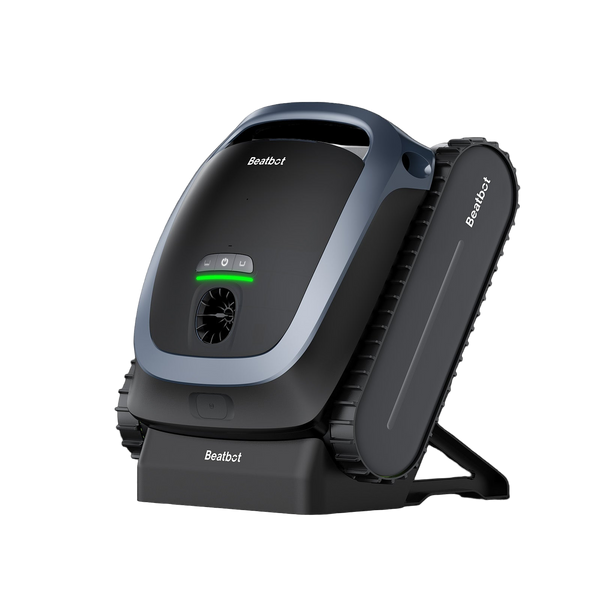How to Plan the Perfect Pool Landscape
A swimming pool can transform any backyard into a retreat—but what truly defines its atmosphere is the landscape around it. The right layout, plants, and materials can make your pool area feel like a resort, while poor planning can lead to clutter, maintenance headaches, or wasted space.
If you already have a pool or are about to start building one, planning your pool landscape carefully is key. From layout to lighting, here’s how to design a functional, beautiful, and easy-to-maintain pool environment. Use the free AI pool designer to instantly generate a beautifully landscaped version of your pool—just upload a photo of your backyard, and the tool will create realistic design concepts with an estimated project cost.
1. Define Your Vision and Lifestyle
How do you actually use this space?
If you love hosting friends, design with entertainment in mind—think wide decks, lounge areas, a fire pit, and built-in seating. If your backyard is a quiet escape, you might prefer a minimalist layout with shaded nooks and soothing greenery. Families with kids might focus on safety, choosing non-slip surfaces, shallow zones, and open sightlines.
Once you’ve clarified how you’ll use your pool area, start gathering inspiration. Pinterest boards and design magazines help, but AI design tools make it even easier. Upload a photo of your existing pool, and the AI can generate multiple landscape styles—modern, tropical, Mediterranean, or minimalist—so you can visualize what fits your lifestyle best.
2. Assess the Site and Environment
Walk around your pool and note its orientation, slope, and exposure to sun and wind. Observe where the light hits during the day and which spots lack privacy.
For uneven ground, landscaping can balance height differences or create natural transitions with steps, retaining walls, or raised planters. If privacy is an issue, strategic placement of hedges, trees, or pergolas can create a secluded feel.
AI-powered pool visualization tools are incredibly helpful. They let you preview different layouts, colors, and materials digitally before committing to any construction costs.
3. Choose the Right Hardscape Elements
Hardscaping—the permanent, structural parts of your landscape—defines the overall layout and flow. It includes paving, pool coping, retaining walls, and any built-in seating or decking.
Material choices matter:
-
Concrete pavers create a clean, contemporary look and are durable under heavy foot traffic.
-
Natural stone adds texture and elegance but requires sealing and maintenance.
-
Composite decking provides a warm, wood-like finish with less upkeep than timber.
Whichever materials you choose, ensure they’re non-slip and resistant to chlorine or saltwater. Keep walking paths wide and comfortable, and coordinate the hardscape color palette with your pool’s interior finish for a cohesive appearance.
Not sure which material suits your home’s architecture? Upload a photo to your AI pool design tool and compare how different pavers or deck tones change the overall mood instantly.
4. Incorporate Plants and Greenery
Plants soften hard edges, provide privacy, and add layers of texture and color. However, poolside conditions—strong sun, reflected heat, and occasional splashes of chlorinated water—can be tough on vegetation.
Choose low-litter, drought-tolerant species such as:
-
Agave, yucca, and ornamental grasses for modern desert vibes
-
Palms, bird of paradise, and hibiscus for a tropical touch
-
Boxwoods or bamboo for privacy screens
Use layered planting to build depth: taller trees or palms in the background, medium shrubs in the mid-level, and colorful groundcovers near paths. Avoid plants with invasive roots or heavy leaf drop that could clog your pool filter.
5. Lighting, Furniture & Finishing Touches
Lighting transforms your pool area from simple daytime space into a stunning nighttime retreat.
-
Path lighting prevents accidents and outlines walkways.
-
Uplighting accentuates trees or architectural walls.
-
Underwater LEDs add drama and color to the pool itself.
Next, add personality with furniture and décor: weatherproof lounge chairs, cushioned sectionals, umbrellas, or even a fire bowl for cozy evenings. Keep materials consistent—mixing too many styles can make the area feel disjointed.
6. Budget and Maintenance Planning
What matters most is thoughtful planning and understanding long-term maintenance.
Start by dividing your budget into categories: hardscape (materials, installation), softscape (plants, irrigation), and features (lighting, décor). Factor in upkeep costs such as pruning, cleaning, and sealing.
Opt for durable, low-maintenance solutions where possible—native plants, drip irrigation, and composite materials can save you both time and money in the long run.
Some AI design tools even estimate approximate costs for different layouts, giving you a realistic sense of how much each design option might cost to build. It’s a smarter way to plan without surprises.
7. Bringing It All Together
The perfect pool landscape isn’t about filling space—it’s about creating balance. A well-planned design connects the pool with your home’s architecture and the surrounding environment. It’s functional during the day, inviting at night, and manageable year-round.
What once required expensive design consultations can now be done in minutes on your screen.
Conclusion
And before you hire a landscaper or break ground, try visualizing your ideas first. Upload a photo of your pool to our AI Pool Landscape Designer to see instant concepts tailored to your space and budget. It’s the easiest way to ensure your next outdoor upgrade looks as amazing in reality as it does in your imagination.
FAQs
What are the key elements of a good pool landscape design?
A great pool landscape balances function and beauty. Focus on flow, safety, privacy, and harmony between hardscape and greenery. Include non-slip surfaces, layered plants, and proper lighting to create an inviting and low-maintenance environment.
How do I choose the right plants around my pool?
Pick plants that can handle heat, sun, and splashes. Opt for low-litter, non-invasive varieties such as agave, palms, or ornamental grasses. Avoid trees with large roots or heavy leaf drop that can clog filters and increase cleaning time.
How much does pool landscaping typically cost?
Pool landscaping costs can range from $3,000 for basic layouts to $20,000+ for custom designs with lighting, decking, and built-in features. The total depends on size, materials, and labor in your area. Planning your layout early helps you stay on budget.
Can I preview my pool landscape design before building?
Yes. Using an AI free pool design tool, you can upload a photo of your pool and instantly visualize landscaping ideas—including layout, plants, and lighting—before spending on materials.















